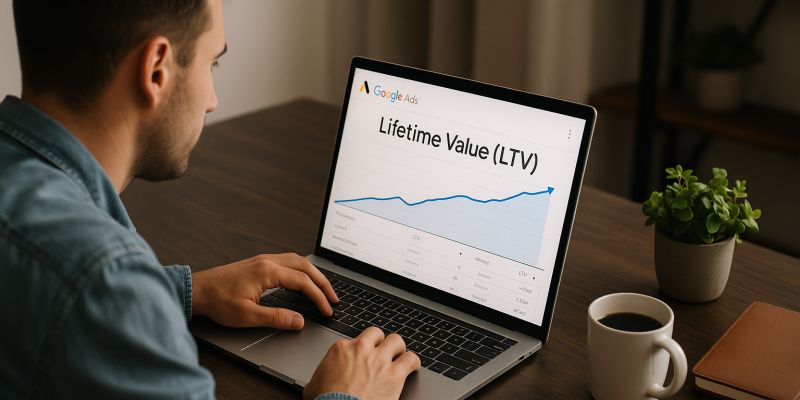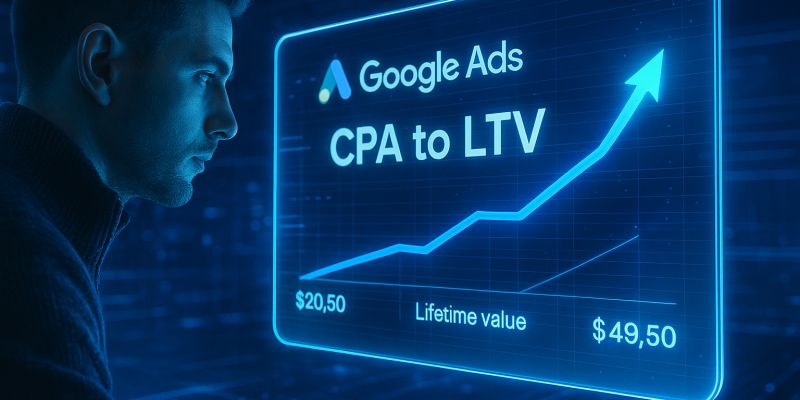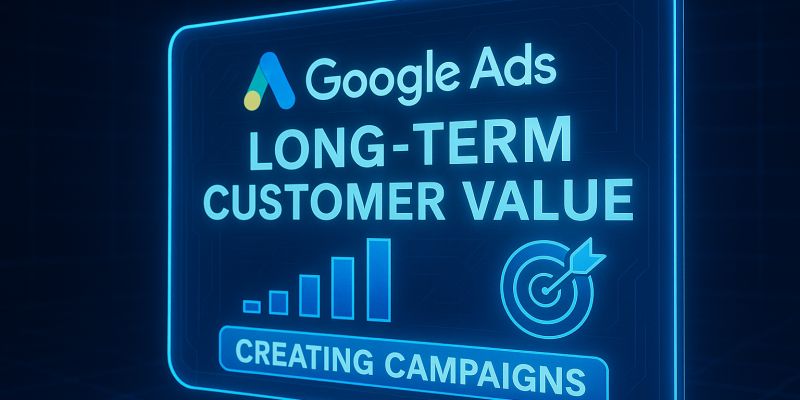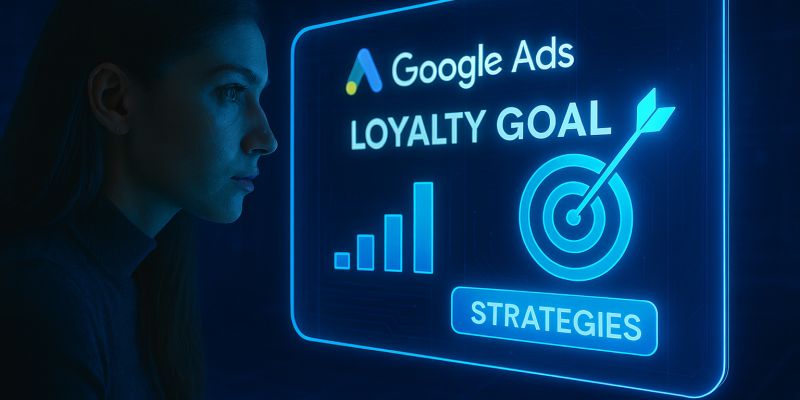

The digital advertising landscape is experiencing a fundamental shift. While businesses have traditionally focused on acquiring new customers at the lowest cost per acquisition (CPA), forward-thinking companies are now recognizing that the real goldmine lies in maximizing customer lifetime value (LTV). This strategic pivot is reshaping how we approach Google Ads campaigns, moving from short-term acquisition tactics to long-term value optimization.
According to research by Bain & Company, increasing customer retention rates by just 5% can boost profits by 25% to 95%. This compelling statistic underscores why the Google Ads loyalty goal has become increasingly important for businesses seeking sustainable growth. When you optimize for lifetime value customers, you're not just buying clicks – you're investing in relationships that compound over time.

Traditional Google Ads strategies have primarily centered around minimizing cost per acquisition and maximizing immediate conversions. However, this approach often overlooks a crucial reality: not all customers are created equal. A customer who makes a single purchase and never returns has vastly different value than one who spends monthly for two years.
Google's own data reveals that businesses focusing solely on first-purchase metrics miss out on understanding true campaign performance. When you implement a repeat customer acquisition strategy, you gain insights into which keywords, ad groups, and audiences drive the most valuable long-term customers.
Research from Harvard Business School shows that acquiring a new customer costs 5-25 times more than retaining an existing one. This economic reality makes the case for prioritizing LTV optimization crystal clear. When you optimize for lifetime value customers through your Google Ads campaigns, you're essentially future-proofing your advertising investment.
Consider this scenario: Campaign A generates 100 customers at ₹1,650 CPA with an average order value of ₹8,250. Campaign B generates 60 customers at ₹2,475 CPA with the same average order value. At first glance, Campaign A appears superior. However, if Campaign A's customers have a 10% repeat purchase rate while Campaign B's customers have a 40% repeat rate, Campaign B delivers significantly higher LTV despite the higher initial acquisition cost.

Google Ads' value-based bidding represents a paradigm shift in campaign optimization. Instead of optimizing for conversion volume, this approach allows you to optimize for lifetime value customers by factoring in the predicted long-term value of each conversion.
To implement this Google Ads loyalty goal effectively, you need to:
Upload your customer lifetime value data to Google Ads using offline conversion tracking. This enables the platform's machine learning algorithms to identify patterns between initial touchpoints and long-term value.
Use Target ROAS (Return on Ad Spend) bidding strategies that account for projected customer lifetime value rather than just first-purchase value. Google's algorithms will automatically adjust bids based on the likelihood of acquiring high-LTV customers.
Create customer lists based on lifetime value segments and use them to inform your bidding strategies. This allows you to bid more aggressively for prospects who resemble your highest-value customers.
The most successful repeat customer acquisition strategy involves sophisticated audience segmentation. By analyzing your existing customer base, you can identify the characteristics that correlate with high lifetime value.
Google Analytics 4 provides powerful tools for this analysis. The platform's predictive metrics can help identify users with high purchase probability and predicted lifetime value. When integrated with Google Ads, this data enables you to create highly targeted campaigns focused on acquiring similar high-value prospects.

Traditional Google Ads copy often emphasizes immediate benefits and urgent calls to action. However, when you optimize for lifetime value customers, your messaging strategy must evolve to attract prospects interested in long-term relationships with your brand.
High-LTV customers typically exhibit different behaviors during their research phase. They spend more time evaluating options, reading reviews, and seek educational content. Your Google Ads loyalty goal should include creating campaigns that address these behaviors through:
Your landing pages play a crucial role in your repeat customer acquisition strategy. Pages optimized for LTV focus on building trust and demonstrating ongoing value rather than pushing for immediate conversions.
Effective LTV-optimized landing pages include customer success stories that span extended timeframes, detailed product information that helps customers make informed decisions, and clear communication about your customer service and support offerings. These elements help convert prospects who are more likely to become loyal, high-value customers.
Traditional Google Ads metrics like click-through rates and conversion rates remain important, but they don't tell the complete story when you're implementing a Google Ads loyalty goal strategy. To truly optimize for lifetime value customers, you need to track metrics that reflect long-term performance.
Google Ads' data-driven attribution model provides insights into which touchpoints contribute most to high-LTV customer acquisition. By analyzing these attribution patterns, you can optimize your campaigns to focus on the channels and keywords that drive the most valuable customers.
Case studies from leading e-commerce brands show that businesses using advanced attribution modeling for their Google Ads loyalty goal initiatives see 20-30% improvements in overall campaign ROI when measured over 12-month periods rather than traditional 30-day windows.

Google's machine learning capabilities have evolved significantly to support businesses that want to optimize for lifetime value customers. The platform's algorithms can now process thousands of signals in real-time to predict which prospects are most likely to become high-value customers.
Recent updates to Google Ads' Smart Bidding include enhanced value-based optimization that considers predicted customer lifetime value in bid decisions. This means the platform can automatically adjust bids not just based on conversion likelihood, but on the predicted long-term value of each potential conversion.
Forward-thinking businesses are integrating their own predictive analytics with Google Ads to create sophisticated repeat customer acquisition strategies. By combining first-party data insights with Google's machine learning, you can create campaigns that specifically target prospects with characteristics matching your highest-LTV customers.
Implementing a successful strategy to optimize for lifetime value customers requires specialized knowledge and experience. Many businesses find that partnering with a knowledgeable Google Ads agency provides access to advanced strategies and tools that would be difficult to develop in-house.
A experienced PPC Agency in Bangalore like Bud brings deep understanding of both local and global market dynamics, enabling businesses to implement sophisticated Google Ads loyalty goal strategies that drive sustainable growth.
As privacy regulations evolve and third-party cookies phase out, the ability to optimize for lifetime value customers becomes even more critical. Businesses that have built robust first-party data strategies and LTV optimization capabilities will have significant competitive advantages.
The future of Google Ads will increasingly favor advertisers who can demonstrate strong customer relationships and lifetime value metrics. This shift makes implementing a comprehensive repeat customer acquisition strategy not just beneficial but essential for long-term success.
The next evolution in LTV optimization involves integrating customer lifetime value data across all digital marketing channels. Google Ads campaigns will become part of a broader customer journey orchestration that optimizes for lifetime value at every touchpoint.
Implementing a successful Google Ads loyalty goal strategy requires commitment to long-term thinking, sophisticated measurement systems, and often the expertise of specialized partners. However, the businesses that make this transition successfully will find themselves with significant competitive advantages as the digital advertising landscape continues to evolve.
The future belongs to businesses that understand that the most valuable click isn't necessarily the cheapest one – it's the one that leads to a customer who will drive value for years to come. When you optimize for lifetime value customers through your Google Ads campaigns, you're not just buying traffic; you're investing in the future of your business.